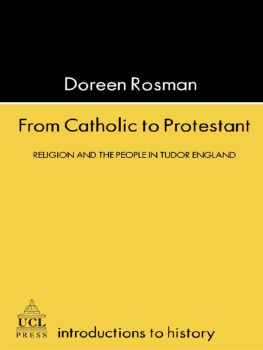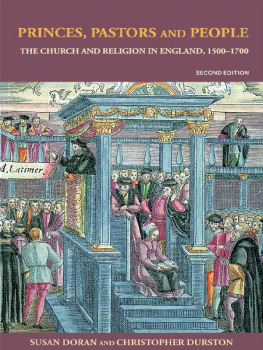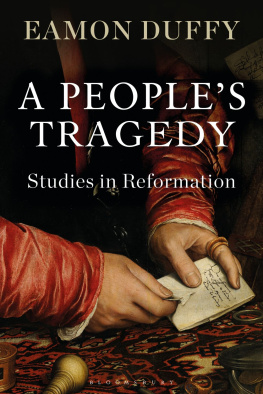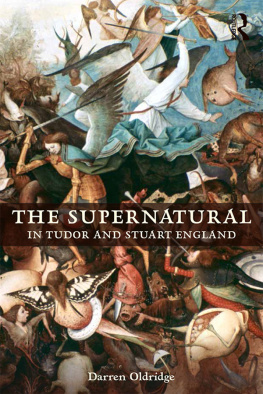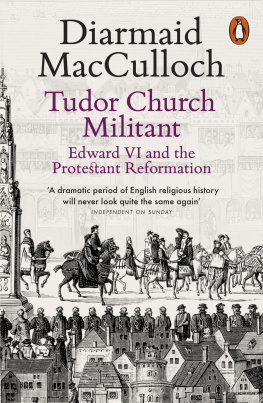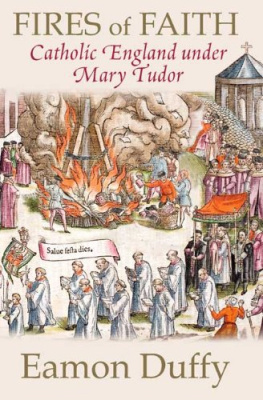introductions to history
Series Editor: David Birmingham,
Professor of Modern History, University of Kent at Canterbury
A series initiated by members of the School of History at the University of Kent at Canterbury
Published titles
David Birmingham
The decolonization of Africa
Christine Bolt
Feminist ferment: The woman question in the USA and England, 18701940
Doreen Rosman
From Catholic to Protestant:
religion and the people in Tudor England
Forthcoming titles
G.M.Ditchfield
The evangelical revival
Jacqueline Eales
Women in early modern England
Susan-Mary Grant
The American Civil War
Kevin Ruane
War and revolution in Vietnam
Bruce Webster
The Wars of the Roses
David Welch
Hitler
From Catholic to Protestant
Religion and the people in Tudor England
Doreen Rosman
University of Kent
Doreen Rosman 1996
This book is copyright under the Berne Convention.
No reproduction without permission.
All rights reserved.
First published in 1996 by UCL Press
UCL Press Limited
University College London
Gower Street
London WC1E 6BT
and
1900 Frost Road, Suite 101
Bristol
Pennsylvania 190071598
This edition published in the Taylor & Francis e-Library, 2003.
The name of University College London (UCL) is a registered trade mark used by UCL Press with the consent of the owner.
British Library Cataloguing in Publication Data
A catalogue record for this book is available from the British Library.
ISBN 0-203-21457-9 Master e-book ISBN
ISBN 0-203-27115-7 (Adobe eReader Format)
ISBN: 1-85728-433-X PB
To Peter, Rose, Mark and Hannah
Preface
This book is designed for people who are interested in studying the religious changes of the sixteenth century but find the mentality of Tudor people hard to comprehend. Why were young artisans and labourers prepared to face death by burning rather than deny their faith? Why did new regulations about the dress worn by ministers of religion prompt a London mob to riot? The chapters that follow attempt to describe what people believed in a way that may be comprehensible to twentieth-century readers who do not have any religious background. Faith was not just an intellectual matter: we need to try to get into peoples feelings, to understand what their beliefs meant to them. In the sixteenth century deep passions were evoked by issues that seem to us petty, unimportant or even incomprehensible. This book aims to help students enter into the mind-set and experience of the people they are studying, to understand their emotions, their framework of thought and the world in which they lived. It tries to explore what it felt like to live through the religious changes of the Tudor period and assesses the impact these had upon everyday life.
CHAPTER ONE
Religion and daily life in the early sixteenth century
Five hundred years ago the church was part of the fabric of everyday life in a way it has long ceased to be. Wherever people looked they saw religious symbols. At parish boundaries, at street crossings, at stiles and on bridges, carved crosses and statues of saints proclaimed that God was guarding those who lived there and travellers who journeyed through. The year was structured round religious festivals, not just Christmas and Easter, which survive as public holidays today, but many others commemorating key episodes in the life of Jesus and the birth of the church. Interspersed among the major festivals were vast numbers of saints days. These constituted the most commonly recognized calendar in a largely unlettered age: people planning to meet or fixing a date by which a debt might be paid made arrangements with reference to Peters-tide, the Eve of St Agnes, or the fair that met on a particular saints day. On important holy days (the origin of holidays) work ceased or was substantially reduced so that people could attend religious services, feasts, revels and sports. During some festivals, pageants and plays on biblical themes were performed at different venues within each town. Often there were street parades, with accompanying handbells, banners and processional crosses.
This chapter aims to outline the belief system that lay behind these practices and to explain how people thought. This is not to imply that belief was uniform: the last section will attempt to explore the diversity of religious attitudes. But early modern people shared widespread assumptions that are alien to our society: this chapter seeks to elucidate those assumptions and communicate something of what it felt like to hold such beliefs.
Beliefs and practices
In the early sixteenth century belief was a corporate and not just a personal matter. Religious rituals were an expression of communal solidarity, ways of securing the welfare of the community. This was most clearly demonstrated at rogationtide when parishioners marched round the boundaries of their parish, demarcating them by hitting the ground with sticks. This affirmed their right to land that might otherwise be claimed by neighbouring communities. The rogationtide marchers believed that the security of their community depended not just on relationships with bordering parishes but on Gods favour and protection. A major function of the rite was to beseech his blessing on the newly planted crops. (The word rogation derives from the Latin verb to ask, rogare.) It was also designed to drive out evil spirits that might hinder growth or destroy neighbourliness. The devil, an evil force opposed to God, was believed constantly to watch for opportunities of disturbing the peace, of harming the unwary, and of distracting Christians from trust in God. Vividly depicted on wallpaintings and woodcuts, he was very much part of popular consciousness. At rogationtide an image of a dragon was carried round some parishes, its long cloth tail docked on the final day of the festival to show that diabolic power could not ultimately prevail against that of God.
The cosmic battle between God and the devil was believed to go back to the beginning of time. Human lives were part of the battleground. Misled by the devil, the first human beings had turned away from their creator as did all later generations. God had sent his son, Jesus Christ, to earth to share human life and bring sinful people back to him. Over the centuries many different theories had been put forward about how this was achieved. John Bossy has summarized what the Church taught around 1500, a set of beliefs that reflect the corporate nature of peoples thinking. When offence had been given, compensation had to be paid, but this need not be done by the individual concerned; kin could pay instead. (In outlying parts of Europe clans still demanded restitution for harm done to their own members from the community of those who had wronged them.) When Jesus died on a cross he was standing in for his kin; his death was offered to God as redress for the offence caused by the disobedience of the rest of humankind (Bossy 1985:36).
What Christ had done was re-enacted every time Mass, the central act of Christian worship, was celebrated. Congregations watched as priests raised wafer bread and wine aloft: these were symbols of the broken body and spilt blood of Jesus. But they were more than mere symbols for at the moment of elevation the bread and wine were believed to be transformed into that body and blood. To receive the bread or host at these communion services was a particularly important religious act, a way of communing with God. At most services the people only watched, but it was widely assumed that merely to be present brought one closer to God. To see him in this, his chosen form, was to draw near to his power. The great feast of Corpus Christi, honouring the body of Christ offered in the Mass, was one of the most enthusiastically supported festivals of the year. The one occasion on which ordinary people regularly received the host at communion was Easter Sunday, the celebration of Jesus rising from the dead. During the season of Lent, the 40 days before Easter, diets had been restricted as a reminder of Christs suffering. On Easter Day parishioners, who had shared the common Lenten discipline, broke their fast together as they received communion. In so doing they affirmed that they were at peace with God and with each other.

